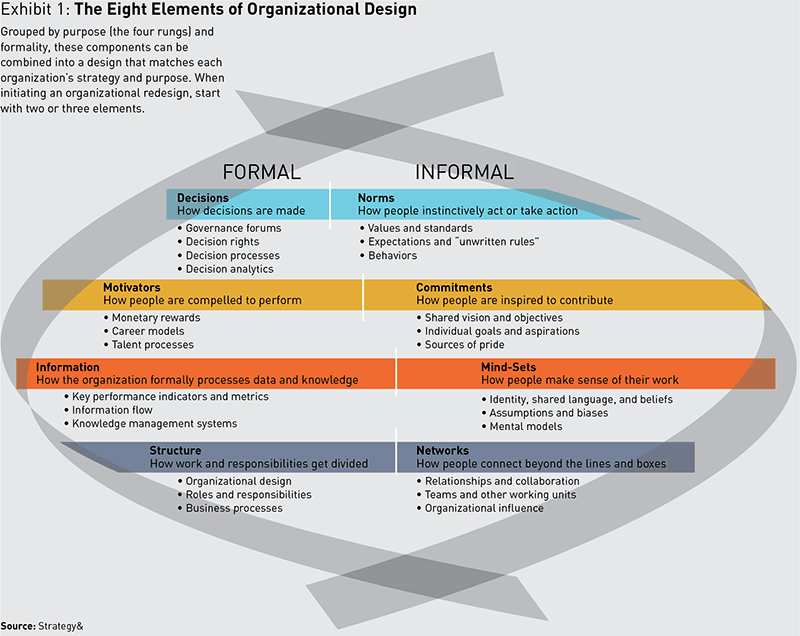
The 10 principles of a company's DNA
When celebrating the anniversary of the business's creation, a company founder realizes how much it can change over the years! Organizations are like people and evolve over time. Just like these, if we know how to "educate" and adapt these to each circumstance of their life cycles, their performance and results will vary in a major way, as happens with their viability. Therefore, it is important to have a real understanding of our company's DNA to be able to act upon it. The 10 basic principles for working on your company's DNA are listed below:
1. Know your company's identity. Each company is apparently unique, but in reality may be classified into merely seven behavioral patterns (in order from the smallest to the most efficient in its performance): passive, aggressive, outgrown, fits-and-starts, just-in-time, military and resilient. It is vital to know which one we fit into and project the one we want or which the market demands.
2. Coexisting with different personalities. Most companies represent a crossover of personalities, or more business units corresponding to the different archetypes. This is the case, especially, with companies that have carried out major acquisitions.
3. Excellence in executing the strategic plan. The link between the organization's personality type and how well it executes its strategy is key. After countless corporate strategy analysis projects, I can affirm that approximately 50% incorrectly manage their strategic plan or fail to follow it altogether. As a result, the company goes adrift or its personality becomes distorted.
4. Listening to the market to adapt to it. The organization's leaders must constantly seek feedback from persons closest to the market, foster and act on the criticism of clients and front-row employees, and adopt measures to resolve minor problems before they become major ones.
5. Performance is based on interdependent factors. Your organization's DNA is composed of our pairs of building blocks: decision rights and norms, motivators and commitments, information and mind-sets, structure and networks. This structure's combination determines a company's aptitude for execution.
6. The organization chart is not the only solution. Many corporate leaders fall into a popular trap: they think that changing the organizational structure will resolve its problems. This may include downsizing upper management levels and temporarily cutting back costs, but very soon these levels emerge again and short-term efficiency vanishes. I constantly perceive structures as the cornerstone which fails as a cornerstone. It is preferable to first modify other formal elements, such as decision rights, motivators, and information flows, and then search for the structural changes required to support the revitalized company. In other words, there's no company without culture!
7. Intangibles are important. Companies find these formal DNA elements of an organization attractive because they are tangible. They are easily defined and measurable. However, they are just half of the picture. Results will not be achieved with these elements alone. This occurs because many managers ignore nonformal, intangible elements. These include norms (what people consider correct behavior), commitments (the promises that people are motivated to follow), mind-sets (deeply rooted attitudes and beliefs) and networks (networks amongst employees outside the formal structure). Together these impact ways of thinking, feeling, communicating and behaving. Efforts that yield performance will be imbalanced until one learns to influence these factors.
8. Decision rights and information flow processes. Decision rights and the characteristics of information are as powerful as the organization's structure. Increasingly, more companies intelligently use digital information technology to differentiate themselves. However, these changes may also be low-tech. Some companies increase their performance by scheduling periodical meetings to guarantee that upper-level management and lower-level employees communicate regularly with one another and that information flows throughout the hierarchy more efficiently.
9. Nonformal factors. The best approach to improve intangibles - like norms and commitments - is to use these as a driver of transformation. This way, instead of trying to change a company's culture, use its intangible strengths to help it improve. Suppose that your company loses clients despite its firm commitment to customer service. By focusing on powerful and positive behaviors, commitments may be obtained and customer retention rates will increase.
10. High performance cannot be isolated. It is rare for departments or business units to act independently. Changes are more likely to last when they are comprehensive and implemented throughout a company or division. Manufacturing must know the sales forecast, and Sales, in turn, must know what Marketing intends to promote. The greater the connectivity across different groups or roles, the more efficient the organization.

